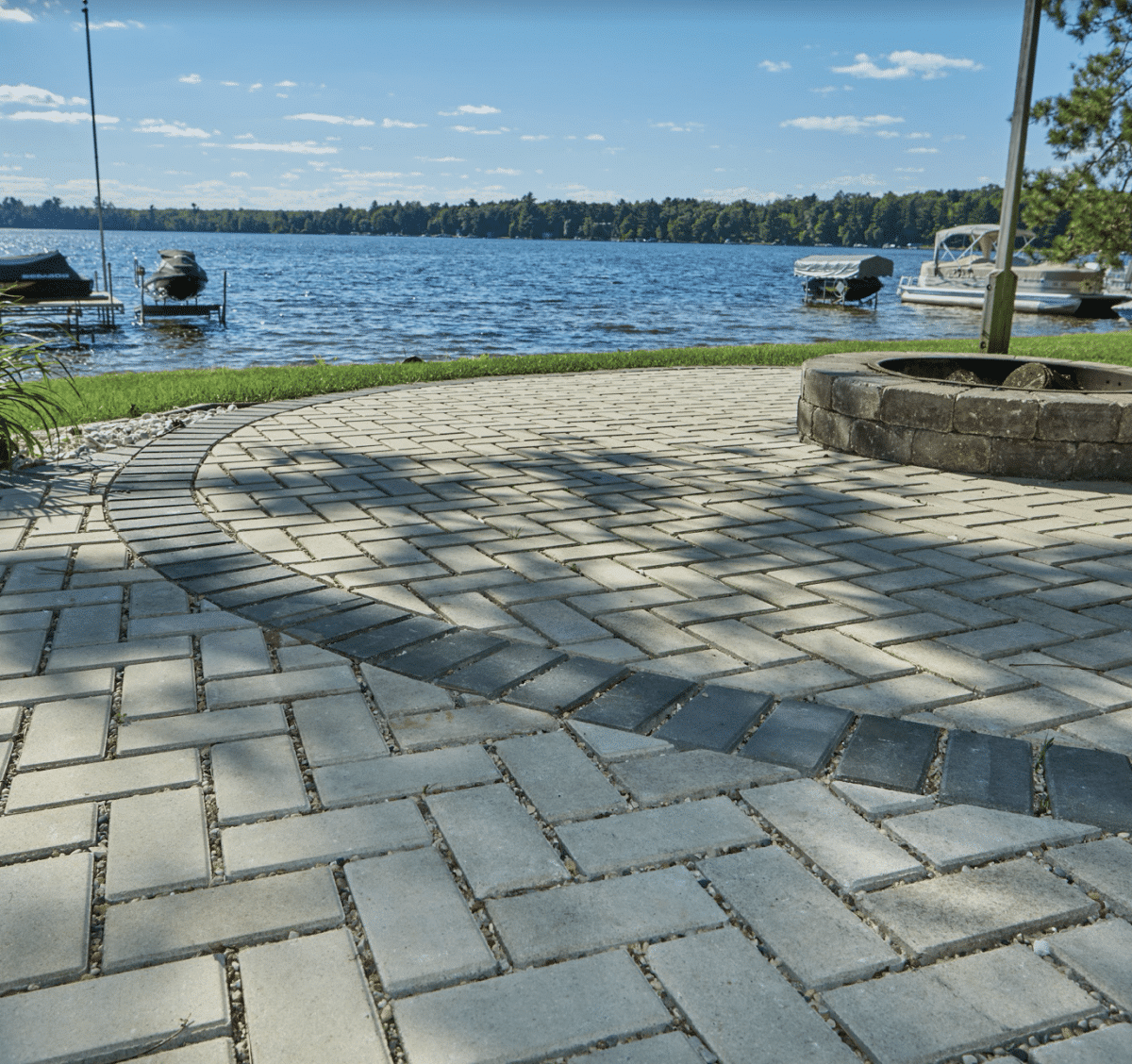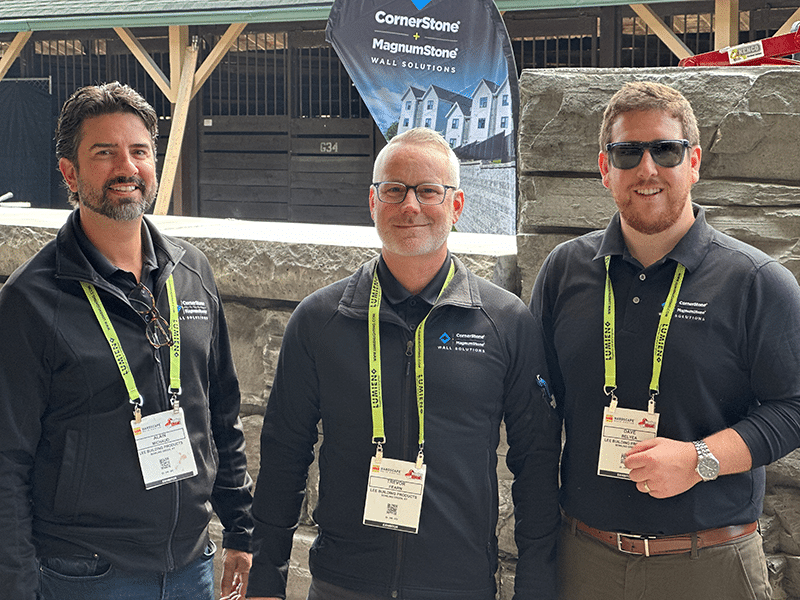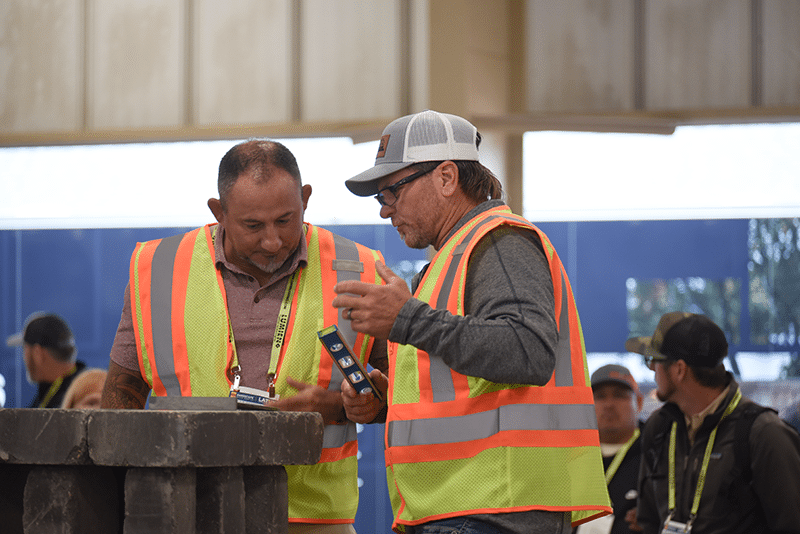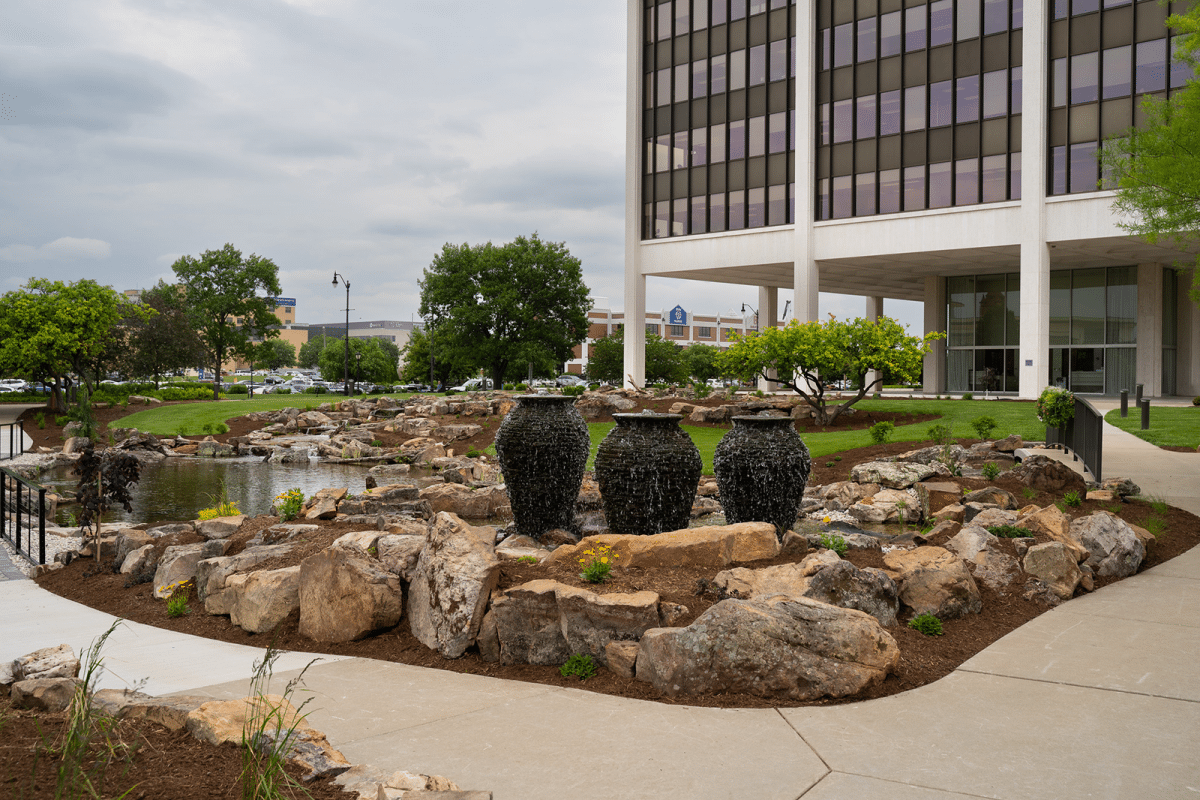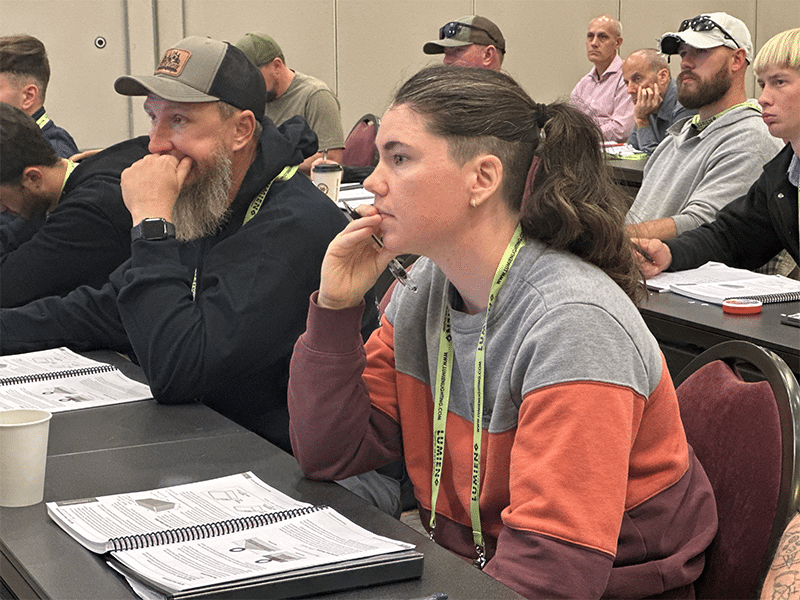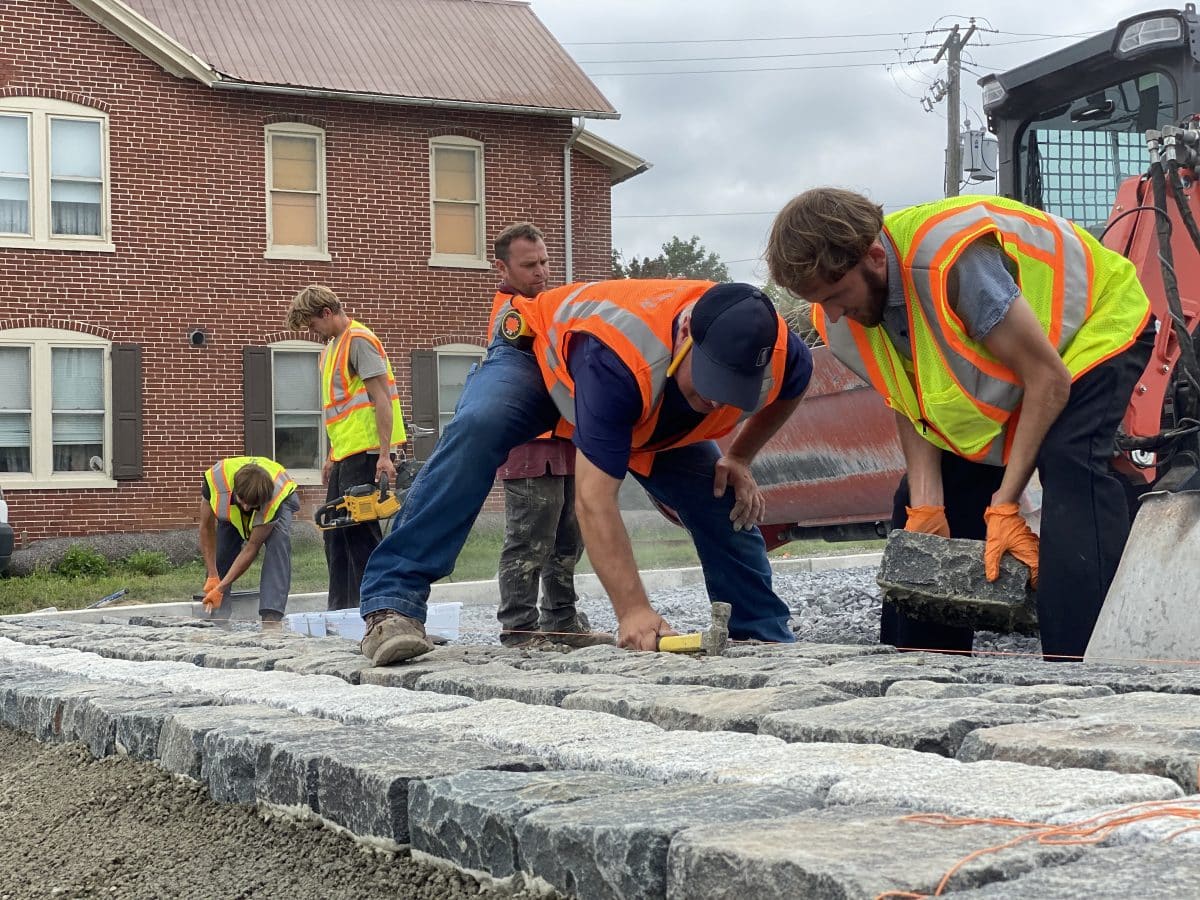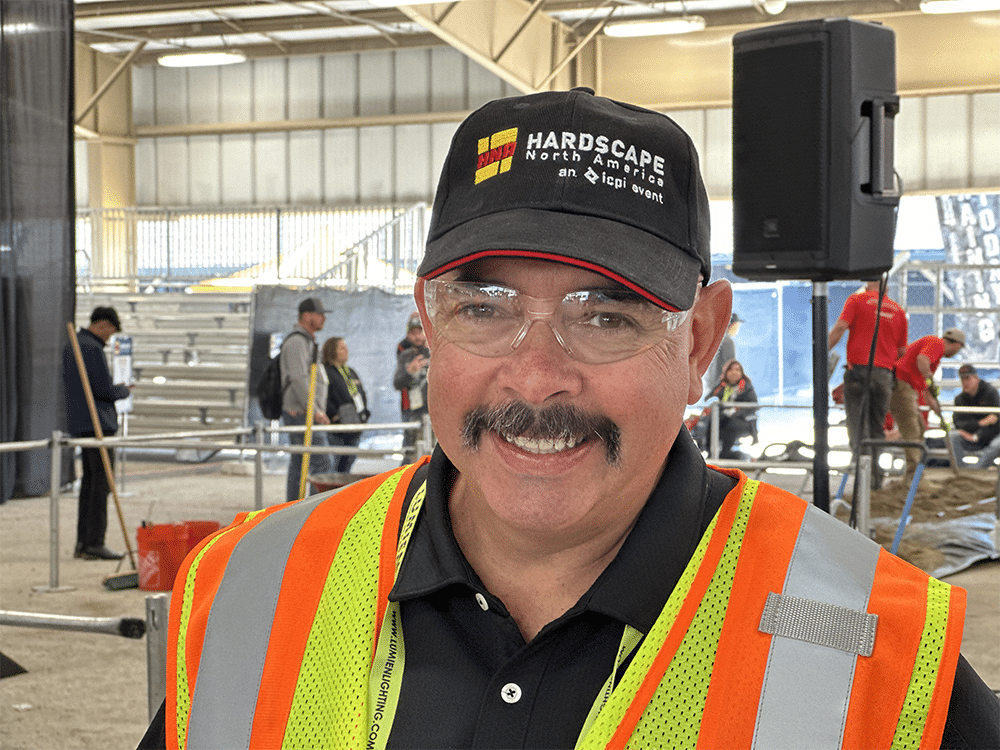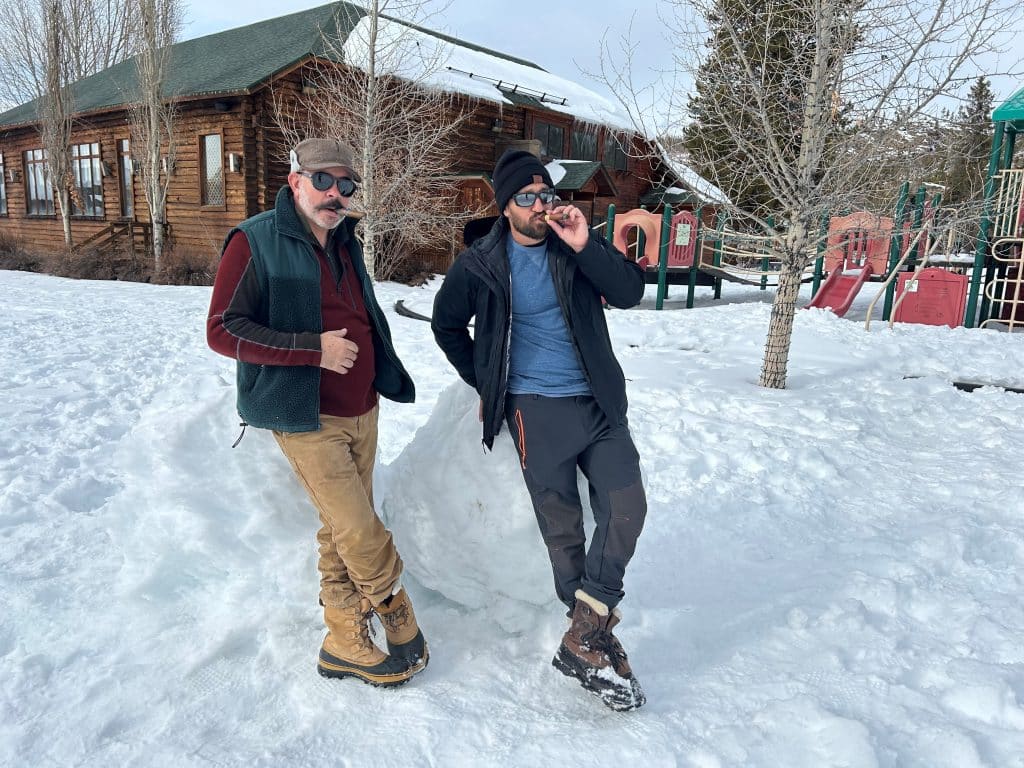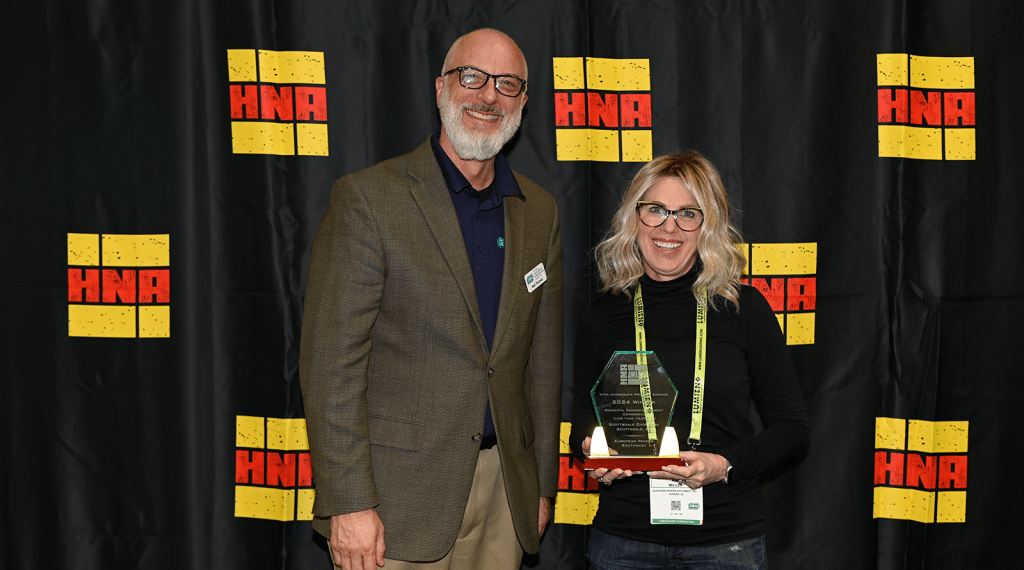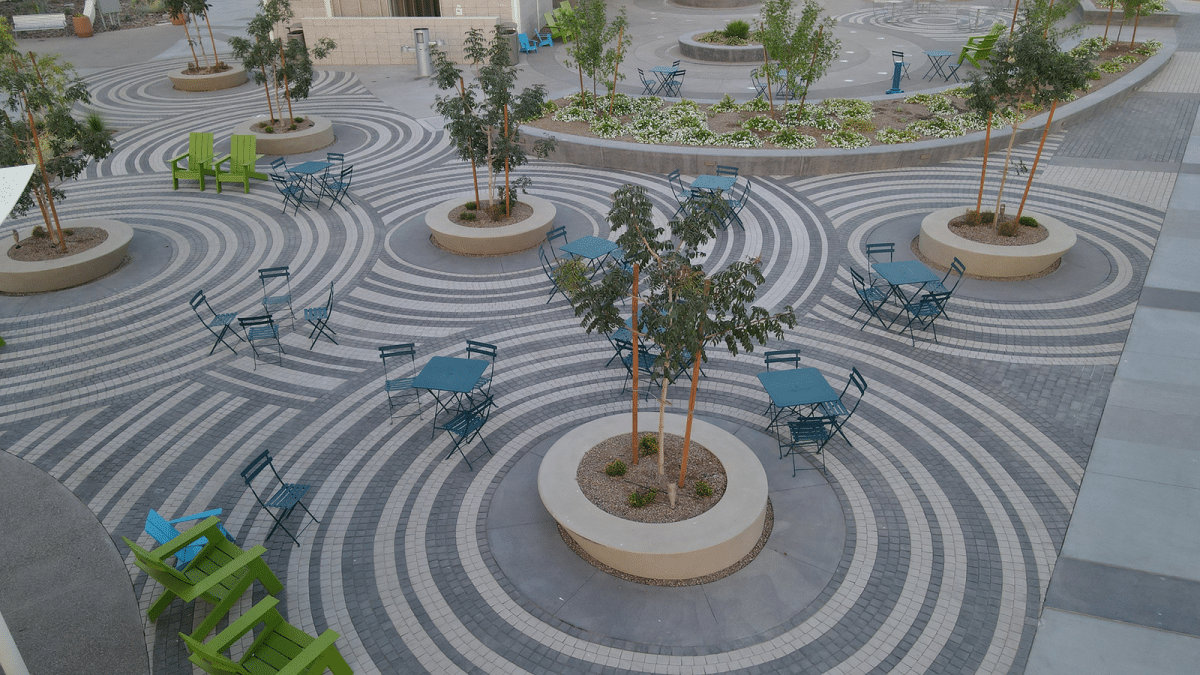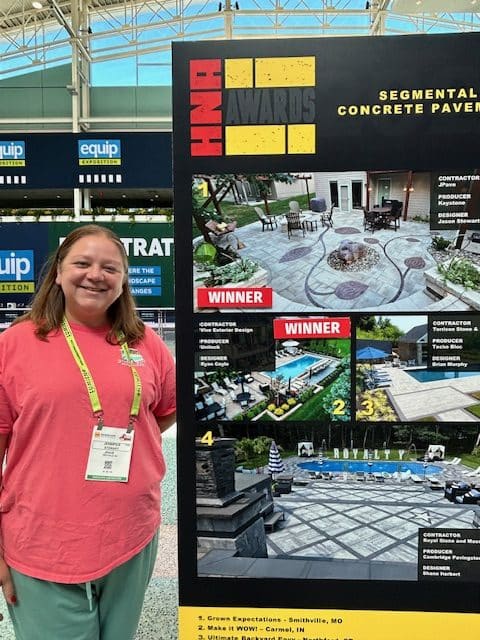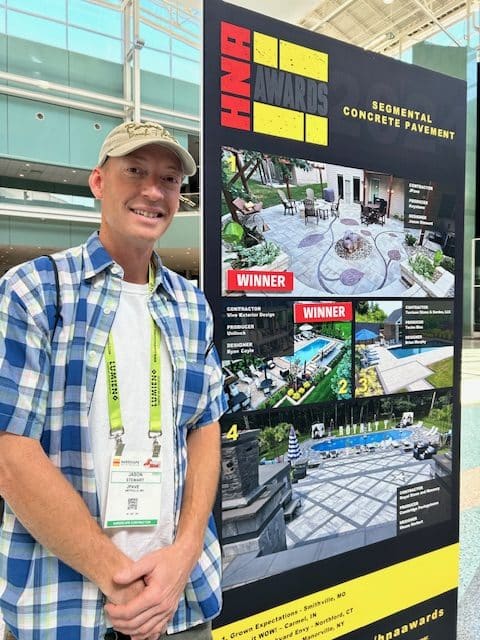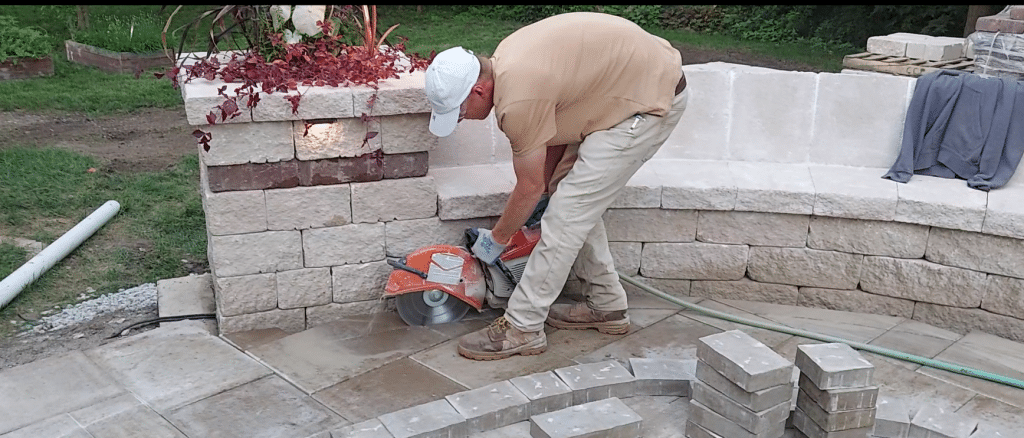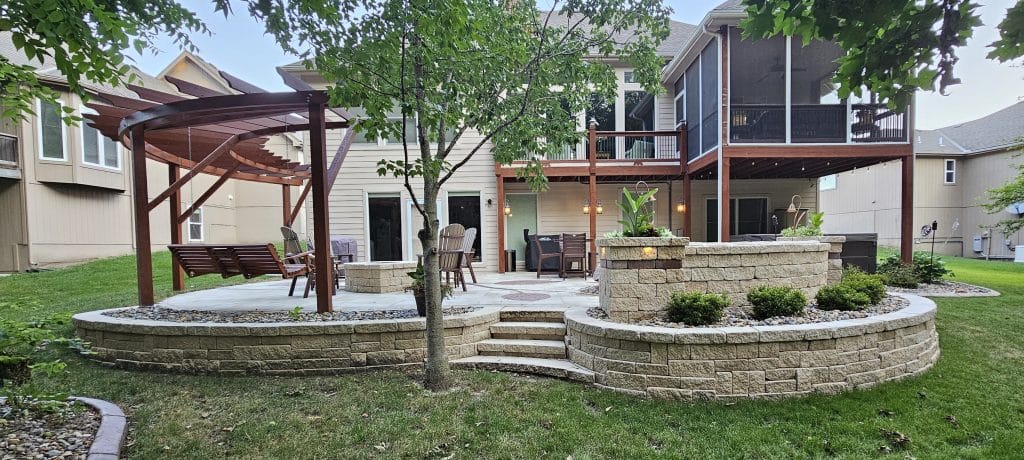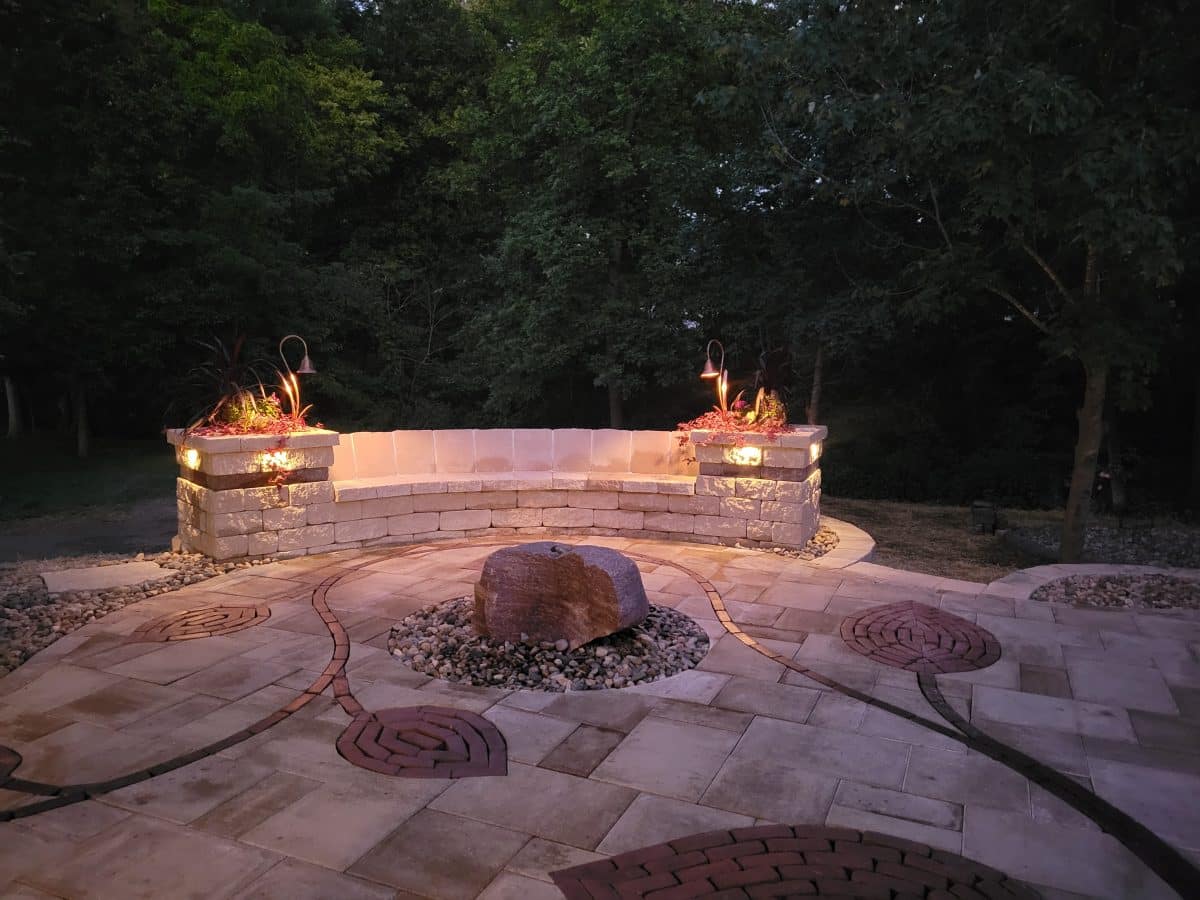Mixing Concrete and the Environment: How Hardscaping Supports Sustainability
Today’s job seekers are often looking for more than just a paycheck; they want purpose. Finding work that aligns with personal values can transform a job into a fulfilling career.
For those who care deeply about environmental resilience and sustainability, the hardscaping industry combines creativity, technology, and environmental problem-solving into real-world results.
Mimicking Natural Systems
The environmental benefits of modern hardscaping techniques extend far beyond what most people realize.
“Permeable Interlocking Concrete Pavement is probably the most visible technology we’ve got that is environmentally focused,” said Robert Bowers, VP of Engineering – Hardscapes at the Concrete Masonry & Hardscapes Association (CMHA).
Permeable pavers absorb and detain rainwater, allowing it to slowly infiltrate into the ground instead of overwhelming municipal infrastructure. This distributed approach reduces runoff volume, minimizes erosion, and lessens the strain on aging stormwater systems.
“Instead of a one-hour storm event overloading the city’s stormwater infrastructure, we can spread that release over days. That’s a major benefit,” Bowers said.
And the environmental upsides don’t stop with water retention. It can also act as a filtration system, filtering out contaminants like total suspended solids, hydrocarbons that leak from vehicles, and even heavy metals. Permeable pavement can also cool water before it enters creeks and ponds, helping protect aquatic life from thermal pollution.
“It’s acting in a lot of different ways. Permeable pavements mimic our natural wetlands better than any other system that we’ve got,” Bowers said. “It captures the water. It filters the water. It detains the water and it replenishes our ground water. It provides a lot of those similar functions a wetland would have.”
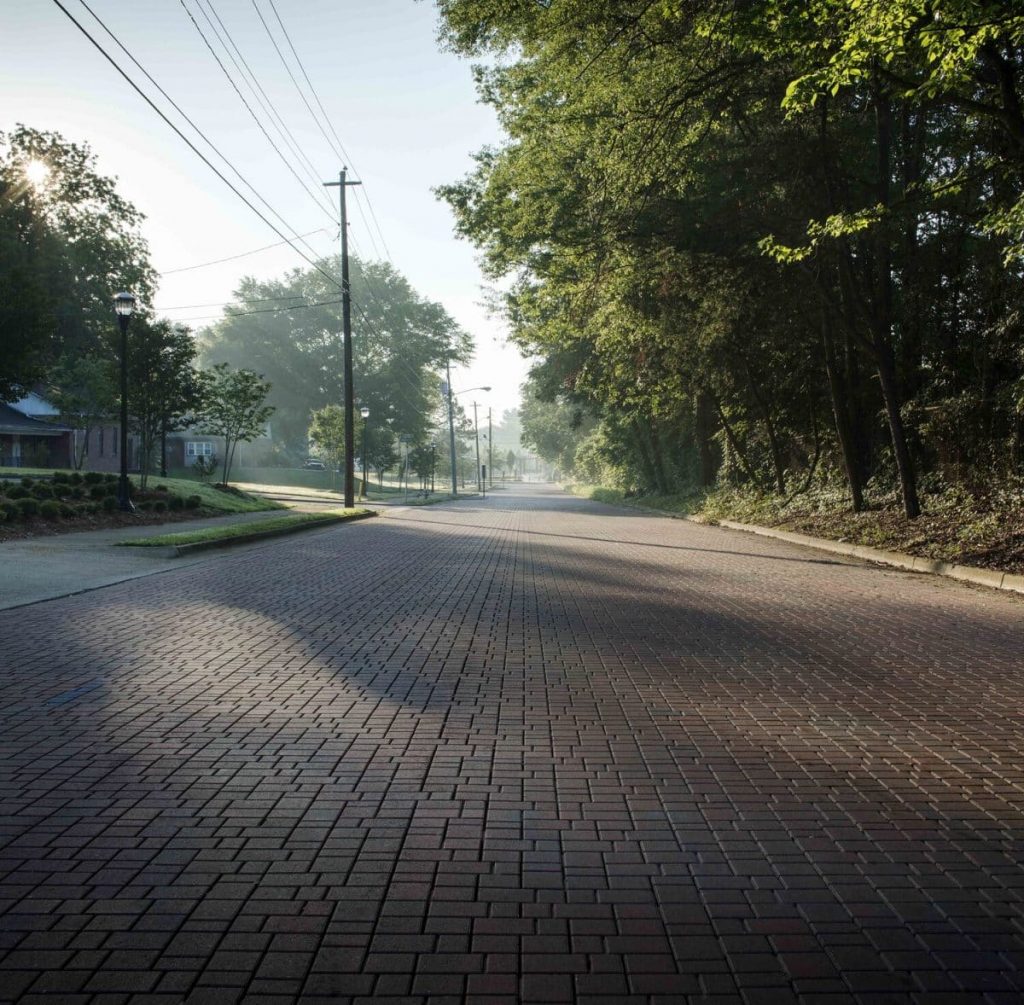
Expanding Sustainable Development
The environmental benefits of hardscaping extend beyond permeable pavements. Segmental retaining walls provide another sustainability opportunity by enabling development of previously unusable land.
“The prime land has been used in most cases,” Bowers said. “What is left is often vacant lots with slopes that make them not ideal to build on.”
Retaining wall systems create level areas on these overlooked properties, helping to control urban sprawl by enabling more efficient use of land within existing boundaries.
“Instead of cities continuing to expand outward, they can start looking inward and see which properties they’ve passed by that they should consider,” said Bowers.
Durability is another environmental asset.
“Concrete has been used for thousands of years and it’s proven its durability and longevity,” Bowers said. “It weathers extreme storm events better than many alternatives, and that’s essential in a world where those events are becoming more frequent.”

Relying on Reusable Elements
Hardscaping also leans heavily into materials that can be reused. Unlike some methods that require demolition and disposal when changes are needed, interlocking pavers stand apart with their remarkable reusability.
Bowers shared an example from the University of New Hampshire. When campus expansion required building on an area where Permeable Interlocking Concrete Pavers had been installed, the university didn’t simply demolish the pavement. Instead, they carefully removed the pavers, stored them during construction, and then reinstalled them for the new building’s pavement needs.
“The impacts of manufacturing a new product were eliminated. The product was already there so they didn’t have to use additional aggregate and cement and the energy to produce them and deliver it to the site. It was all there already,” Bowers said. “Being reusable is a huge benefit.”
The sustainability benefits extend beyond large institutional projects to the residential level.
Pavers can be reused if the homeowner wants to reconfigure the area or needs other changes. This isn’t possible with traditional asphalt or poured concrete slabs.
Training for a Greener Future
If you’re interested in entering the field with an emphasis on sustainability, Bowers recommends seeking certifications for the installation of permeable pavement systems, interlocking concrete pavers, and segmental retaining walls.
For instance, the CMHA Permeable Interlocking Concrete Pavements (PICP) Installer Course covers how to properly build systems that allow stormwater to filter into the earth—turning what was once treated as waste into a resource. It teaches not just the installation techniques, but also the science behind why these systems and materials matter.
“From a design perspective, from an engineering perspective, understanding how the system works, how it integrates and connects with the other systems in a built environment is important. There’s also the maintenance side,” Bowers said. “CMHA is positioned to support those different aspects or roles with training, information, and materials.”
CMHA’s educational offerings empower professionals across construction, design, and maintenance to build hardscapes that are not only beautiful and functional, but also climate-smart, scalable, and resource-efficient.
Hardscaping might not be the first thing that comes to mind when you think of green careers, but with the right training, the industry offers the chance to build something that benefits both communities and the environment.
Learn more about CMHA’s offerings and get started on your own values-driven career path.
